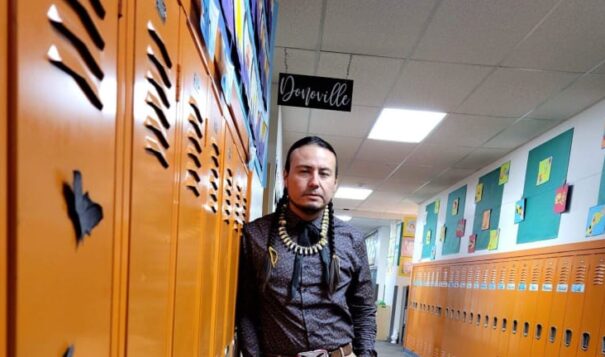News Based on facts, either observed and verified directly by the reporter, or reported and verified from knowledgeable sources.
‘Keep the medicine going’
 Rod First Strike, cultural specialist in Polson, Montana, is encouraging young boys to wear their hair long. (Courtesy photo)
Rod First Strike, cultural specialist in Polson, Montana, is encouraging young boys to wear their hair long. (Courtesy photo)
Native teacher in Montana inspires boys to wear hair long
In 2021, when Rod First Strike was working as a cultural specialist at Linderman Elementary in Polson, Montana, he noticed a lot of kindergarten and first-grade boys were being teased for wearing their hair long.
Hair holds significance in Indigenous cultures. It’s seen as a source of strength, connecting Native Americans to their ancestors. And often, when a loved one dies, Native people may choose to cut their hair short to symbolize the profound loss. Some say long hair is a sign of resilience, as Native people were forced to cut their hair short as a form of assimilation in government-run boarding schools. And in some places, long hair remains controversial. A network of charter schools in North Carolina has a policy prohibiting male students from wearing long hair, and the Native American Rights Fund intervened, urging the school to “permanently remove the discriminatory and outdated assimilationist policy.”
First Strike said caring for long hair is also a form of meditation.
“It gives you some time to check in with yourself,” he said. “And it can be social, too. You can tell what kind of condition a person is in by the condition of their hair.”
First Strike, Blackfeet, Assiniboine, and Cree, said the problem with teasing boys for wearing their hair long is two-fold.
“It’s an insult to culture,” he said. “It’s also a subtle form of gender comparison or sexism. If you are teasing a boy for looking like a girl, it’s implying that being a girl is a bad thing. There’s no shame in being a girl.”
First Strike also saw himself in the boys he teaches. He remembers being ridiculed and mocked when he was young for wearing his hair long. He grew tired of explaining its cultural significance and wished he had a role model or someone who could stand up for him and teach his classmates what it meant to have long hair.
First Strike wanted to change the narrative and be that person for his students.
In 2021, he started raising money to give boys who wore their hair long braided sweet grass and a certificate to “keep the medicine going,” or continue to grow their hair.
First Strike later got a promotion and began working with 400 students from kindergarten through fourth grade. He counted 36 boys — Native and non-Native — who wore their hair long. Last year, he raised money to buy materials so the children could make ribbon shirts for themselves. First Strike said it was important to include non-Native boys who wore their hair long “to knock down gender norms.”
“You can raise awareness, you can push for diversity, but what I really want is inclusion,” he said. “It gives us a stronger community. It makes kids less shocked by differences and more likely to embrace each other’s differences. Instead of saying, ‘That’s weird,’ it’s saying, ‘That’s cool!’”
Now, First Strike is raising money again to commission and pay Native artists to make beaded ropes for each boy with long hair.
He said he’s already seen a change in the community since his initiative began two years ago.
“Most of the boys embrace one another,” he said. “We don’t have as much division. This local community in Polson is very supportive.”
First Strike’s fundraiser is called “Boys with Braids” and can be found on GoFundMe.
This article was first published in the Missoulian.
